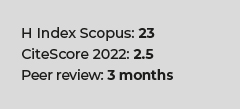Infection by Bordetella pertussis and Bordetella parapertussis in cases of suspected whooping cough (2011-2015) in Mar del Plata, Argentina
DOI:
https://doi.org/10.17843/rpmesp.2017.341.2770Keywords:
Bordetella pertussis, Bordetella parapertussis, Whooping cough, SurveillanceAbstract
Objectives. To classify the study population in the Argentinian National Health Surveillance System framework, determine the proportion of infection by Bordetella pertussis and Bordetella parapertussis, and identify factors associated with the cases of suspected whooping cough attended to in the city of Mar del Plata and its outskirts during the period 2011-2015. Materials and Methods. An observational and descriptive study was carried out. Clinical cases with suspicion of whooping cough were diagnosed by laboratory. The laboratory studies consisted of culture, PCR, and serology using the ELISA technique. Results. A total of 572 cases were evaluated. The female sex was the most frequent (51.9%). The most frequent age range was 2 to 17 moths (51.1%; 290/568), which was also the group with the most confirmed cases. Only 47.8% (155/324) of the population studied had complete vaccination for their age. Whooping cough due to B. pertussis was confirmed in 15.5% (89/572) of cases and one case with B. parapertussis. Those cases that had contact with a coughing relative were significantly associated with the confirmation of Bordetella spp. by the laboratory (odds ratio: 3.3; 95% confidence interval: 1.9-5.4). Conclusions. The results show the need to suspect whooping cough and diagnose it early in children, adolescents, and adults in order to better control the disease. Likewise, continuing prevention and containment measures are fundamental in decreasing the circulation of the causal agent.



























